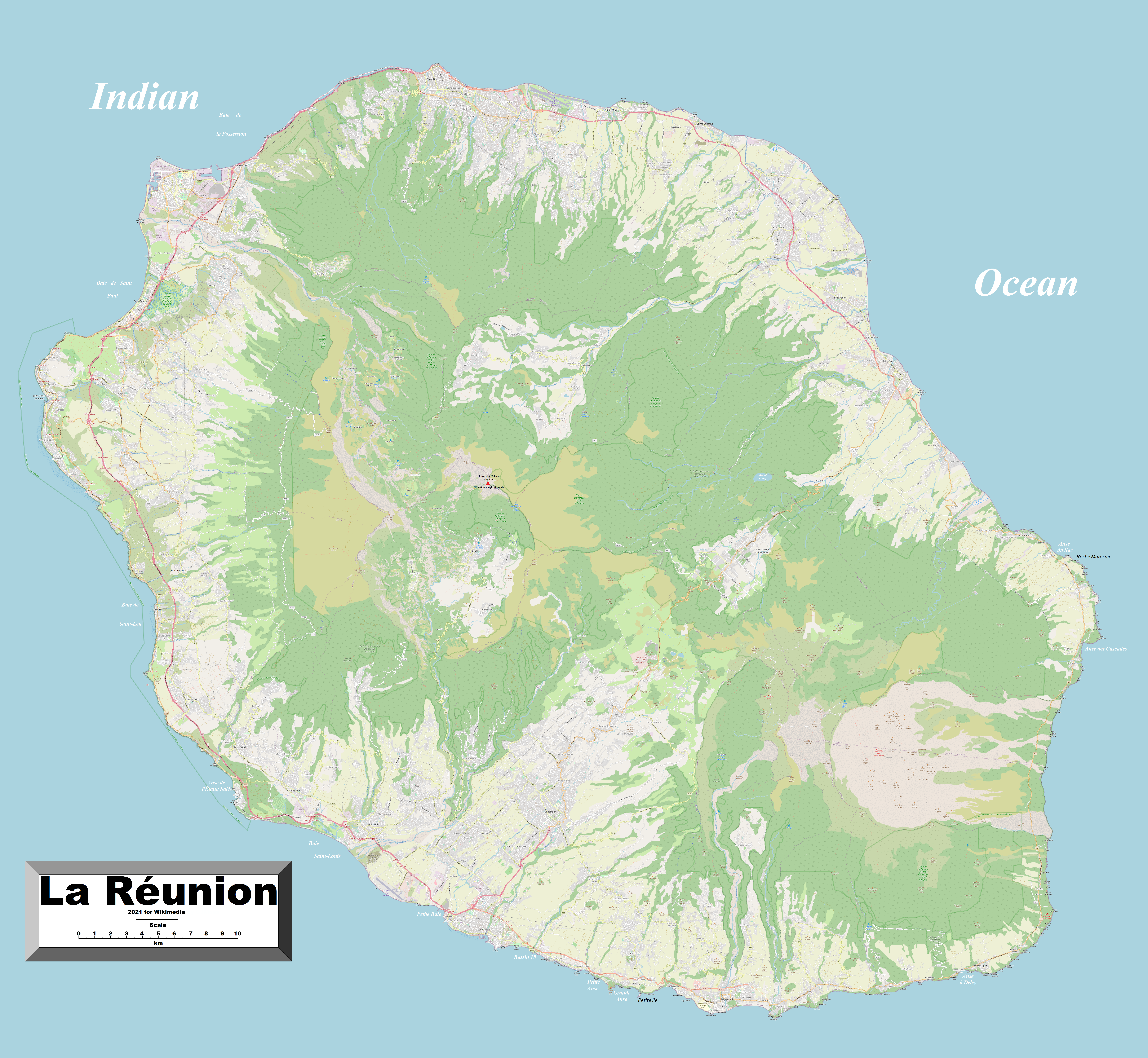Geography Of Réunion on:
[Wikipedia]
[Google]
[Amazon]

Réunion
Réunion (; french: La Réunion, ; previously ''Île Bourbon''; rcf, label= Reunionese Creole, La Rényon) is an island in the Indian Ocean that is an overseas department and region of France. It is located approximately east of the island ...
is an island in Southern Africa
Africa is the world's second-largest and second-most populous continent, after Asia in both cases. At about 30.3 million km2 (11.7 million square miles) including adjacent islands, it covers 6% of Earth's total surface area ...
, in the Indian Ocean
The Indian Ocean is the third-largest of the world's five oceanic divisions, covering or ~19.8% of the water on Earth's surface. It is bounded by Asia to the north, Africa to the west and Australia to the east. To the south it is bounded by th ...
, east of Madagascar
Madagascar (; mg, Madagasikara, ), officially the Republic of Madagascar ( mg, Repoblikan'i Madagasikara, links=no, ; french: République de Madagascar), is an island country in the Indian Ocean, approximately off the coast of East Africa ...
. It is an overseas region of France
France (), officially the French Republic ( ), is a country primarily located in Western Europe. It also comprises of Overseas France, overseas regions and territories in the Americas and the Atlantic Ocean, Atlantic, Pacific Ocean, Pac ...
. The total area of the island is 2,512 km², of which 10 km² is water. The island has a coastline of 207 km. The maritime claims of Réunion include an exclusive economic zone of 200 nautical miles, and a territorial sea of . Reunion is geologically situated in the Somali plate
The Somali Plate is a minor tectonic plate which straddles the Equator in the Eastern Hemisphere. It is currently in the process of separating from the African Plate along the East African Rift Valley. It is approximately centered on the isl ...
.
Climate
Theclimate
Climate is the long-term weather pattern in an area, typically averaged over 30 years. More rigorously, it is the mean and variability of meteorological variables over a time spanning from months to millions of years. Some of the meteorologic ...
in Réunion is tropical
The tropics are the regions of Earth surrounding the Equator. They are defined in latitude by the Tropic of Cancer in the Northern Hemisphere at N and the Tropic of Capricorn in
the Southern Hemisphere at S. The tropics are also referred to ...
, but temperature moderates with elevation. The weather is cool and dry from May to November, and hot and rainy from November to April. The terrain
Terrain or relief (also topographical relief) involves the vertical and horizontal dimensions of land surface. The term bathymetry is used to describe underwater relief, while hypsometry studies terrain relative to sea level. The Latin word ...
is mostly rugged and mountainous, with fertile lowlands along the coast. The lowest point is the Indian Ocean
The Indian Ocean is the third-largest of the world's five oceanic divisions, covering or ~19.8% of the water on Earth's surface. It is bounded by Asia to the north, Africa to the west and Australia to the east. To the south it is bounded by th ...
and the highest is Piton des Neiges
The Piton des Neiges (Snow Peak) is a massive 3,069 m (10,069 ft) shield volcano on Réunion, one of the French volcanic islands in the Mascarene Archipelago in the southwestern Indian Ocean. It is located about east of Madagascar. ...
at 3,069 m.
Natural resources
Réunion's natural resources are fish, arable land andhydropower
Hydropower (from el, ὕδωρ, "water"), also known as water power, is the use of falling or fast-running water to Electricity generation, produce electricity or to power machines. This is achieved by energy transformation, converting the Pot ...
. In 1993, 60 km² of the land was irrigated
Irrigation (also referred to as watering) is the practice of applying controlled amounts of water to land to help grow crops, landscape plants, and lawns. Irrigation has been a key aspect of agriculture for over 5,000 years and has been devel ...
. The use of the land in 1993 is described in the table below:
Natural hazards
Local natural hazards include: periodic, devastating cyclones (December to April), andPiton de la Fournaise
Piton de la Fournaise (; en, "Peak of the Furnace") is a shield volcano on the eastern side of Réunion island (a French overseas department and region) in the Indian Ocean. It is currently one of the most active volcanoes in the world, along ...
(2,631 m) on the southeastern coast is an active volcano
A volcano is a rupture in the crust of a planetary-mass object, such as Earth, that allows hot lava, volcanic ash, and gases to escape from a magma chamber below the surface.
On Earth, volcanoes are most often found where tectonic plates are ...
.

External links
{{Réunion-geo-stub